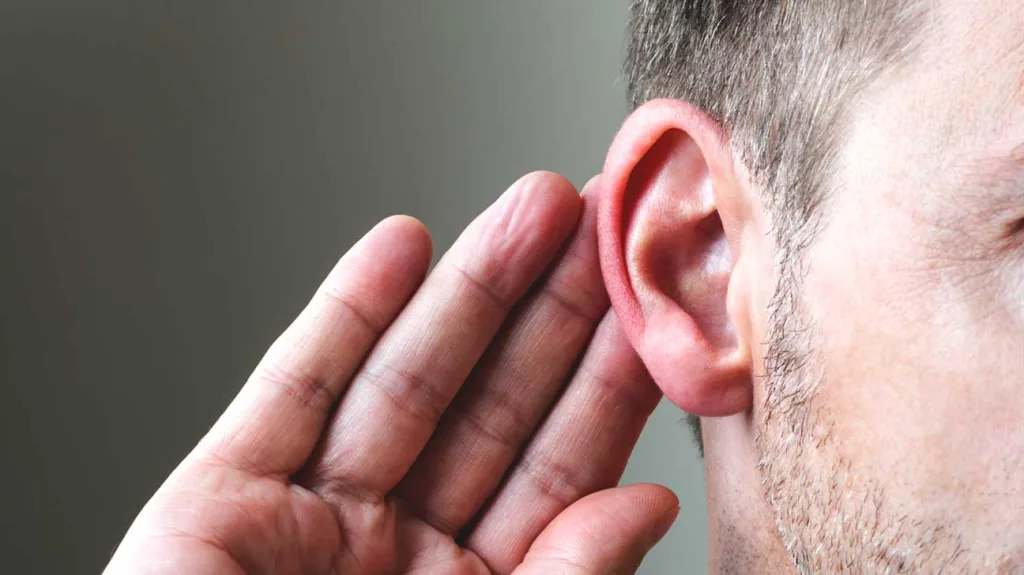Sonic booms have been a topic of conversation for decades. Now with the rise of advanced aircraft, the possibility of experiencing a sonic boom is greater than ever. So what is a sonic boom and can it hurt you?
A sonic boom is an intense sound wave produced by an object traveling through the air faster than the speed of sound, which is approximately 767 miles per hour (1,230 kilometers per hour). When this object travels at supersonic speeds, it produces shock waves in the air similar to what happens when you drop a pebble in a pond. These shock waves are heard on the ground as loud booming noises.
So can a sonic boom hurt you? In most cases, no. Sonic booms produce loud noises that can be startling and disruptive, but they don’t typically cause physical harm. However, there are exceptions to this rule. If an aircraft were to fly over at extremely close range or directly above an individual, then there could be potential for physical damage. The pressure created by a sonic boom at such close range could burst eardrums and potentially cause structural damage to buildings or cars in its path.
It’s also important to note that prolonged exposure to loud noises – such as those created by sonic booms – can cause hearing loss over time. It’s recommended that if you hear a sonic boom or any other loud noise, you should take steps to protect your ears by covering them with your hands or using noise-canceling headphones or earplugs if possible.
Overall, while sonic booms may be disruptive and startling they usually don’t pose any real danger unless experienced at extremely close range. It’s still important to take steps to protect your hearing from long-term exposure thouh so make sure to take appropriate safety precautions whenever possible!
The Effects of a Sonic Boom on Humans
A sonic boom is an incredibly loud sound created by a shock wave generated when an aircraft travels faster than the speed of sound (Mach 1). To humans, this sound can be incredibly loud and startling. It is characterized by a deep, explosive, and often prolonged noise that can cause startle reactions and fear as well as disrupt sleep, rest, relaxation, and communications. The intensity of the sonic boom varies depending on the size of the aircraft and its distance from the observer.

Can Sonic Booms Be Lethal?
No, a sonic boom cannot be lethal. While it can cause hearing damage and other physical discomfort, the sound pressure of a sonic boom is between 140 and 180 decibels, which is not enough to cause death. Additionally, the sound only lasts for a few seconds, so the exposure time is too short for any fatal consequences.
Can Sonic Boom Cause Physical Damage?
Yes, sonic booms can cause physical damage, depending on the intensity of the pressure wave. The maximum measured boom during realistic flight conditions was 21 pounds per square foot, which is above the threshold for expected damage. Buildings in good repair should be able to withstand pressures of less than 16 pounds per square foot without suffering any damage, however if a sonic boom surpasses that threshold damage such as shattered glass can occur.
Can Sonic Booms Cause Deafness?
Yes, sonic booms can cause hearing loss. In fact, any sound over 80 decibels (dBA) can potentially cause damage to your hearing. The louder the sound, the more lkely it is that your hearing will be affected and the greater the potential loss may be. Sonic booms are especially loud and can reach volumes of 140-180 dBA; this level of sound is enough to cause permanent hearing damage in a matter of minutes. Therefore, it is important to take precautions when exposed to a sonic boom, such as wearing ear plugs or other protective devices. It is also wise to avoid areas where sonic booms occur if at all possible.
Can a Sonic Boom Shake Your House?
No, a sonic boom is unlikely to shake your house. Sonic booms typically only produce sound and pressure waves, not physical vibrations. In order for a sonic boom to shake your house, it would need to be strong enough to cause a structural vibration as well as an audible sound. While it is technically possible for this to occur, it is quite rare.

Source: scienceabc.com
Can Humans Reach Super Sonic Speeds?
Yes, humans can go supersonic. Skydiving is one of the few ways to achieve this feat. To do so, a skydiver must be properly equipped with a pressurised suit, oxygen supply and other protective gear. At an altitude of aroud 120,000 feet, the skydiver would reach terminal velocity and begin to plummet towards Earth at roughly 200 miles per hour. Approximately 30 seconds later, the skydiver would break the sound barrier and become the first human ever to fly supersonically without an aircraft or space shuttle. Although not recommended due to extreme conditions and risk of injury, it is scientifically possible for a human to go supersonic by skydiving from such a great height.
The Possibility of Silencing a Sonic Boom
No, it is not possible to completely silence a sonic boom. Sonic booms are caused by the shock waves created when an airplane travels faster than the speed of sound, and the only way to avoid these shock waves is to travel at a subsonic speed. There have been attempts to reduce the noise caused by sonic booms, most notably with a device called the Quiet Spike. This device works by guiding shockwaves away from the aircraft in order to minimize their intensity and noise level, but it is still not effective enugh to be used for supersonic overflight of land.
Can Pilots Feel Sonic Booms?
No, a pilot cannot feel a sonic boom. Sonic booms are generated when an aircraft travels faster than the speed of sound, creating a shockwave that can be heard on the ground as a loud ‘boom’ or thunder-like noise. However, because the pilot is inside the aircraft, they do not experience this noise. Instead, they see the pressure waves around the plane in what is known as the ‘boom carpet.’ This phenomenon appears as a ripple of air that unrolls behind the airplane.
The Absence of Sonic Booms in Modern Times
The reason why we no longer hear sonic booms is due to noise abatement regulations that have been put in place by the United States government. Sonic booms occur when an aircraft, such as a civil aircraft, breaks the sound barrier and travels faster than the speed of sound (Mach 1). These sonic booms can be incredibly loud and disruptive for people living nearby airports and other areas where supersonic flights are conducted. In order to reduce this noise pollution, regulations have been put in place to restrict civil aircraft from breaking the sound barrier in U.S. airspace.
The Concorde was one of the only civil aircraft that could still break the sound barrier over certain ocean routes, hoever it is no longer in service. This means that apart from military airplanes or special test flights, there is no civil aircraft that can break the sound barrier over U.S land, therefore eliminating any chance of hearing a sonic boom.

The White Substance Produced by a Sonic Boom
The white stuff seen in a sonic boom is a vapor cone, also known as a Mach diamond, shock collar, or shock egg. It is a visible cloud of condensed water that forms aound an object moving at high speeds through moist air, usually an aircraft flying at transonic speeds. The condensation occurs due to the shock waves created by the sonic boom. As the aircraft moves faster than the speed of sound (Mach 1), it generates a strong pressure wave that compresses and condenses the moisture in the air into an easily visible cloud. This phenomenon can only be observed from certain angles relative to the direction of travel as it is caused by changes in pressure around the object rather than its actual physical shape.
Can Sonic Booms Be Used as a Weapon?
Sonic booms can be used as a weapon, albeit in a limited capacity. Sonic booms are created when an object, usually an aircraft, moves faster than the speed of sound, creating intense shock waves that can cause physical and psychological damage to people in its path. While sonic booms don’t typically cause permanent injury or death, they still have the potential to cause hearing loss, disorientation and even panic. Military and law enforcement forces have experimented with using sonic booms as a non-lethal form of crowd control in certain situations.
The Sensation of a Sonic Boom
A sonic boom feels like a sudden, sharp jolt of pressure that is usually accompanied by a loud, thunder-like sound. The feeling of the sonic boom is most comparable to the sensation of standing next to a large firework when it goes off; a sudden, powerful blast of noise and air pressure. The intensity of the sonic boom depends on many factors, including the size and speed of the object that created it. People who experience a sonic boom close-up may also feel their ears pop due to the rapid change in air pressure.
Conclusion
To conclude, sonic booms can have a significant impact on the environment. The loud noise of the boom is capable of startling people, interrupting sleep and communication, and potentially causing hearing loss. It is also capable of breaking windows and damaging buildings if the pressure it causes is strong enough. Despite this, modern aircraft are designed to minimize their sonic boom output, meaning that most people will not experience any negative effects.
